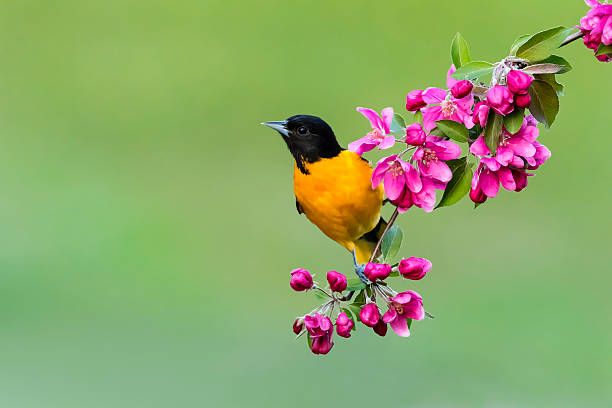Few birds are as dazzling and melodious as the Oriole. With their vibrant plumage and flutelike songs, orioles have captured the fascination of birdwatchers and casual nature lovers alike. Among the various types of orioles, the Baltimore oriole stands out as one of the most recognized, especially in the eastern regions of North America. Whether you’ve glimpsed a flash of orange and black feathers darting through a treetop or heard their liquid call echoing in the spring air, these birds are impossible to ignore.
Table of Contents
Scientific Classification
- Kingdom: Animalia
- Phylum: Chordata
- Class: Aves
- Order: Passeriformes
- Family: Icteridae
- Genus: Icterus
- Species: Various (e.g., Icterus galbula for the Baltimore oriole)
The Baltimore oriole bird belongs to the blackbird family, Icteridae, and shares this group with meadowlarks, grackles, and cowbirds.
Description / Physical Description
Orioles are medium-sized passerines, typically 18 to 20 cm in length. Males of most species exhibit strikingly bright coloration—often a mix of orange and black, with strong contrast that makes them easy to spot. The Baltimore oriole, in particular, is a showstopper: the male sports a flame-orange breast, black head and back, and white wing bars.
The female oriole, on the other hand, is more subdued in tone. A female Baltimore oriole usually wears a muted yellow-orange with grayish-brown wings and head, which helps her remain inconspicuous during nesting.
Both sexes have slender, pointed bills adapted for probing and sipping nectar, as well as catching insects.

Range & Distribution
Where are the orioles from? Orioles inhabit vast stretches of the Americas, with various species adapted to different regions:
- The Baltimore oriole breeds in eastern North America and migrates to Central America, northern South America, and the Caribbean for the winter.
- Other orioles, such as the Bullock’s oriole, populate the western United States.
- Tropical species like the Altamira oriole remain year-round in Mexico and Central America.
Migratory patterns are strong in temperate species, with spring migrations bringing vibrant colors and songs to northern woodlands and parks.
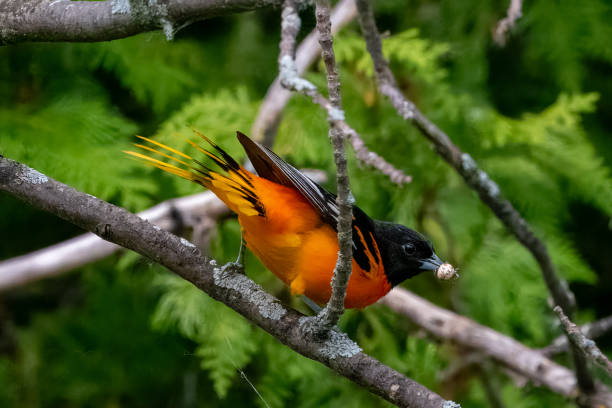
Habitat
Orioles prefer open deciduous woodlands, forest edges, and suburban areas with scattered tall trees. They are often found near streams, orchards, and gardens. Their favored trees for nesting include elms, cottonwoods, and maples.
The Baltimore orioles bird tends to avoid deep forests, instead gravitating toward areas with access to both tree cover and open spaces for foraging.
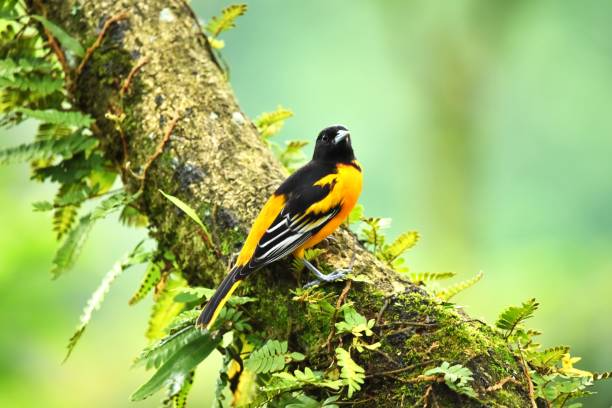
Diet
What do orioles eat? Orioles are omnivorous, but with a sweet tooth—figuratively speaking.
Their diet includes:
- Fruits: Especially ripe or overripe, such as oranges, mulberries, and bananas.
- Nectar: Extracted from flowers or provided in feeders.
- Insects: Caterpillars, beetles, wasps, spiders, and grasshoppers form a vital protein source, especially during the breeding season.
- Jelly: Grape jelly is a popular human-provided treat that orioles can’t resist.
This varied diet not only fuels their energy-intensive migratory journeys but also supports rapid growth in nestlings.

Behaviour / Lifestyle
Orioles are diurnal and solitary outside the breeding season. Their song is one of their defining characteristics—clear, whistling, and often delivered from high treetops. The male sings to mark territory and attract mates.
These birds are acrobatic foragers, often seen hanging upside-down while probing for insects or fruit. During migration, they travel at night in flocks, guided by the stars and geomagnetic cues.
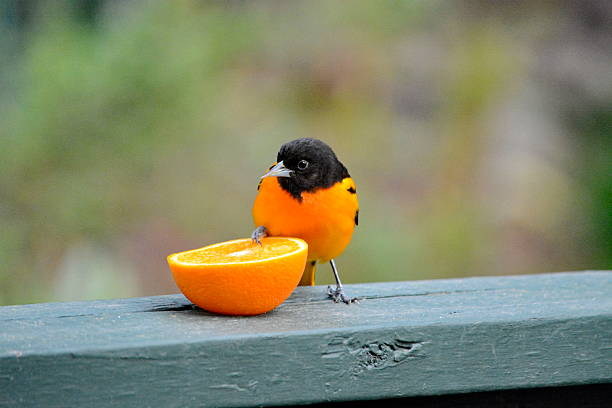
Lifespan
In the wild, orioles live an average of 6 to 8 years, though many perish earlier due to predation and environmental hazards. In exceptional cases, banded birds have been recorded surviving for over 10 years.

Adaptations
Orioles have evolved a range of adaptations for survival:
- Long, pointed bills: Ideal for piercing fruit skins and catching insects.
- Bright plumage: In males, aids in courtship; in females, camouflage protects against predators.
- Strong legs and feet: Help them perch delicately on branches or feeders.
- Migratory instincts: Enable them to cover thousands of kilometers annually with uncanny precision.
Their vocal mimicry and melodic whistles are also considered adaptive in both mate attraction and territory defense.

Mating & Reproduction / Reproduction & Lifecycle
The breeding season for orioles begins in late spring. Males perform courtship displays that include fluttering flights and rich singing.
Females weave hanging, pouch-like nests using plant fibers, grasses, and even synthetic materials like yarn. These nests are typically suspended from the tips of branches, making them difficult for predators to access.
- Clutch size: 3 to 7 eggs
- Incubation: ~12–14 days
- Fledging: Nestlings leave the nest about 2 weeks after hatching
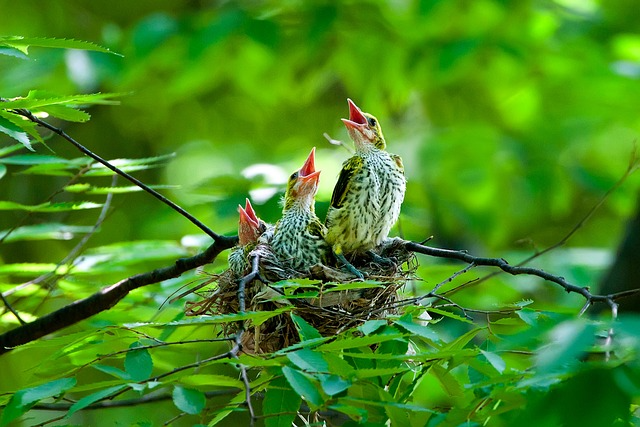
Both parents often contribute to feeding the young, although in some species, the female carries most of the burden.

Predators
Orioles face a variety of predators throughout their lifecycle:
- Egg and chick predators: Snakes, squirrels, blue jays, and raccoons
- Adult predators: Hawks, domestic cats, and occasionally larger owls
Their nests’ high, dangling positions and the female’s camouflage are primary defense mechanisms.
Conservation Status
Most oriole species, including the Baltimore oriole, are listed as Least Concern by the IUCN. However, they still face threats:
- Habitat loss due to urbanization and deforestation
- Window collisions during migration
- Pesticide use, which reduces insect populations and poisons the birds indirectly
Conservation efforts include promoting native plant gardening, migration-friendly policies, and public education on maintaining bird feeders and habitats.
Interesting Facts
- The Baltimore oriole is the state bird of Maryland, named after the orange-and-black colors of Lord Baltimore’s coat of arms.
- Orioles are drawn to orange-colored objects, which mimic the fruits they favor.
- Only the female Baltimore oriole builds the nest.
- These birds can learn and mimic new sounds, though not as complexly as some parrots.
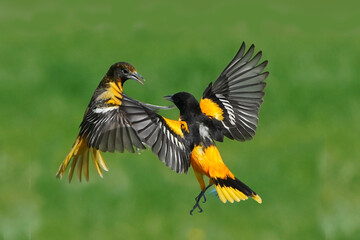
As Pets
Orioles are not suitable as pets due to their migratory nature, specialized diet, and legal protections under the Migratory Bird Treaty Act in the U.S. Attempting to keep one can be detrimental to the bird’s health and is illegal in many regions.
Those wishing to observe them up close can attract them to backyards using:
- Orange slices
- Grape jelly
- Specialized nectar feeders
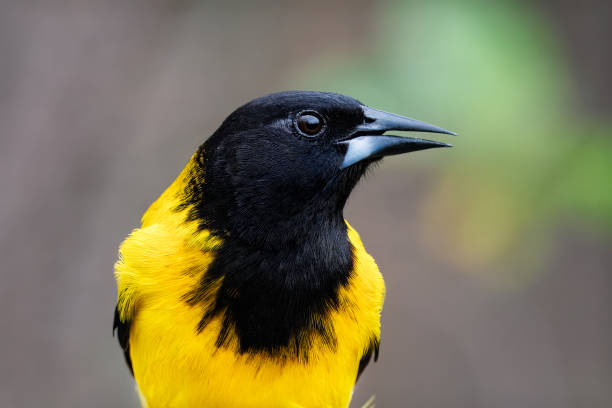
Classification of Species
The oriole genus (Icterus) includes over 30 species found across the Americas. Some notable types:
- Baltimore oriole (Icterus galbula)
- Orchard oriole (Icterus spurius)
- Altamira oriole (Icterus gularis)
- Bullock’s oriole (Icterus bullockii)
- Streak-backed oriole (Icterus pustulatus)
Each species exhibits unique coloration patterns and habitat preferences, though most share similar behaviors and diets.
Subspecies
The Baltimore oriole does not have formally recognized subspecies, though slight regional variations in plumage tone and size have been observed.
Other oriole species, such as the Orchard oriole, may have recognized subspecies differentiated by their geographic range and subtle physical distinctions.
Orioles are among the most captivating birds in the Western Hemisphere, their fiery hues and musical calls a signal of spring’s arrival. Understanding their biology and behavior not only enhances appreciation but also aids in conserving their presence for future generations.

